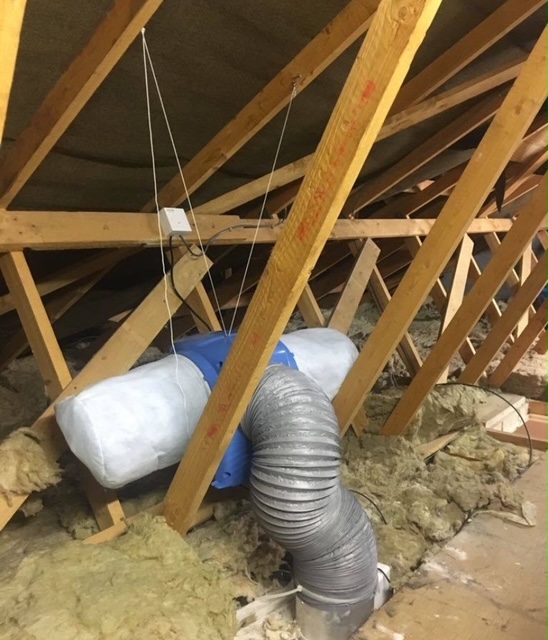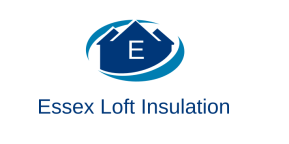Condensation and Mould Growth Prevention
What is Positive Input Ventilation?
Positive Input Ventilation is a passive ventilation system designed to address indoor air quality concerns by introducing fresh, filtered air into a building from external sources. Unlike other ventilation methods, PIV focuses on creating a positive pressure environment within living spaces, promoting better air circulation and mitigating issues like condensation and mold growth.

How Does a PIV System Work?
A typical Positive Input Ventilation system consists of a central fan unit usually installed in the loft or attic space of a building. The fan unit draws in fresh outdoor air through a filter, removing impurities. The filtered air is then gently introduced into the building through strategically placed vents or ceiling diffusers.
The continuous introduction of fresh air creates positive pressure within the building. This pressure helps expel stale and moist air through natural leakage points, like gaps around windows and doors. By maintaining positive pressure and encouraging air circulation, PIV systems effectively control humidity levels, reducing the likelihood of condensation and mold growth.

Cheaper Than Running Dehumidifiers or Air Conditioners
One significant advantage of Positive Input Ventilation is its cost-effectiveness compared to running dehumidifiers or air conditioners. Dehumidifiers consume substantial amounts of electricity to remove excess moisture from the air, while air conditioners require even more energy to cool the indoor environment. PIV systems, on the other hand, operate on lower wattage and rely on natural airflow, resulting in significantly lower energy consumption and reduced utility costs.
Reduced Condensation and Mould Growth Prevention
One of the primary benefits of PIV systems is their ability to tackle condensation and prevent mold growth. Condensation occurs when warm, moist air comes into contact with cold surfaces, leading to water droplets forming. PIV systems counteract this by continuously introducing fresh, filtered air, which helps regulate humidity levels and maintain positive pressure. This, in turn, reduces the occurrence of condensation and prevents the conditions conducive to mold growth.
Householders Can Enjoy Improved Health
Indoor air quality has a direct impact on occupants’ health, and poor ventilation can lead to respiratory issues, allergies, and other health concerns. By ensuring a constant supply of fresh air, PIV systems contribute to improved indoor air quality, reducing the concentration of pollutants and allergens. This can result in a healthier living environment, particularly for individuals with respiratory conditions or allergies.
Virtually No Maintenance Required
Another notable advantage of PIV systems is their low maintenance requirements. Once installed, these systems typically operate with minimal attention. The fan unit may require occasional filter replacement, but overall, PIV systems are known for their reliability and durability. This low-maintenance characteristic adds to their appeal as a hassle-free solution for improving indoor air quality.
Where Can You Use PIV Systems?
Positive Input Ventilation systems are versatile and can be used in various settings. They are commonly employed in residential properties, including houses, apartments, and flats. PIV systems are particularly beneficial in older homes with limited natural ventilation, where issues like condensation and dampness may be prevalent. Additionally, PIV systems can be installed in commercial buildings, offices, and other spaces where maintaining good indoor air quality is essential.
How Effective Are PIV Systems?
The effectiveness of PIV systems depends on various factors, including the size and layout of the building, local climate conditions, and existing ventilation issues. In general, PIV systems are known to be highly effective in controlling condensation, reducing mold growth, and improving overall indoor air quality. However, it’s essential to consider individual circumstances and consult with professionals to determine the most suitable ventilation solution for a specific environment.
Are Positive Input Ventilation Systems Noisy?
Concerns about noise are common when considering ventilation systems. However, PIV systems are designed to operate quietly, with the fan unit installed in the loft or attic space to minimize any potential noise disturbance. The sound generated by PIV systems is typically low, making them unobtrusive and suitable for use in residential and commercial settings without causing discomfort to occupants.
How Much Does a PIV Cost?
The cost of installing a Positive Input Ventilation system can vary based on factors such as the size of the property, the complexity of the installation, and the specific features of the chosen PIV unit. On average, the cost of a PIV system, including installation, can range from a few hundred to over a thousand pounds. While the initial investment may seem significant, the long-term benefits, including energy savings and improved indoor air quality, often outweigh the upfront costs.

